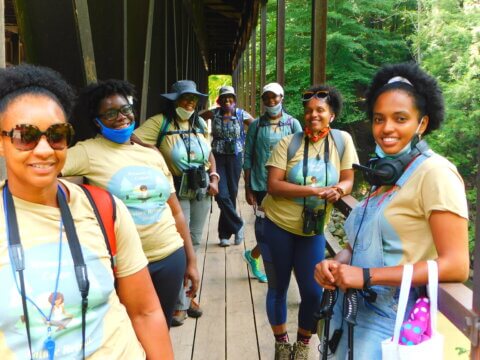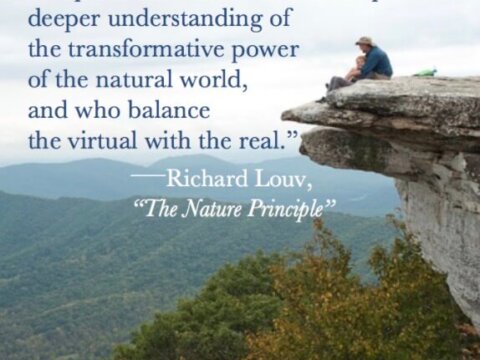Art zine helps Black and Brown youths show others what they see in nature
When Alayna Schmidt, a graduate student at Western Carolina University, proclaimed her fondness for walking barefoot in the grass to some Asheville youths, 12-year-old Davaughn let loose with a four-letter word.
“Ewww.”
Then, 12-year-old Jamahl piled on with: “What if you get worms in your feet?”
“The first thing I did was giggle – because it was such a shock to have someone say that,” said Schmidt, now a doctoral student in Parks, Recreation and Tourism Management at Clemson University.
“But later on, I realized the validity in DeVaughn and Jamahl’s statements. You could get worms in your feet.
“But my white body would give me a greater access to treatment that maybe theirs would not…maybe the potential for physical harm from nature is less of a risk for me than it is for them.”
While Schmidt wasn’t expecting the students’ candor, she welcomed the insight it delivered. That’s because DeVaughn and Jamahl’s reactions, as did others, helped her consider how Black and Brown youths’ perceptions of nature may differ from white-dominated perceptions. As Schmidt later discusses in her graduate thesis, titled “Art as Counternarratives: A/r/tographic Understandings of Black Youth’s Conceptualizations of Nature,” prevailing concepts of nature in the U.S. frequently revolve around whiteness and normalize white preferences.
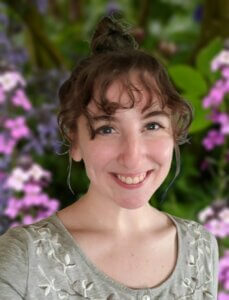
Alayna Schmidt is a Ph.D. student in Parks, Recreation and Tourism Management at Clemson University.
So in 2022, as part of her thesis research, Schmidt collaborated with Asheville Writers in the Schools & Community, now known as the Artéria Collective, to publish Davaughn’s, Jamahl’s and four other youths’ art and ideas about nature in an art zine.
The zine, titled, “Black & Brown youth’s ideas of nature in Asheville,” was the result of a year-long project that involved around fifteen youths, from elementary to middle school age.
It features pencil drawings, paintings and excerpts from the youths on their perceptions of the natural world.
The zine also includes splatter art created with paint-filled balloons on white paper to “bust” myths about nature. Written on the outside of the balloons were myths like: “Bees are bad,” “Snakes are bad,” and “Nature is only outside.”
Understanding Black and Brown youths’ perspectives and why they may hold such beliefs can play an essential role in designing programs to help them experience nature, said Schmidt, who is also a research assistant with the Race, Ethnicity, Youth and Social Equity Collaboratory, or REYSE Collaboratory, at Clemson.
“When we’re thinking about nature access initiatives or programs, or even measuring access to nature, so often we’re thinking of, or assuming what nature is, through a white-centric lens,” she said.

An image of the splatter art from the final zine, created by throwing darts at paint-filled balloons taped to white paper.
“Once we have a better idea of how they [Black and Brown youths] are conceptualizing nature, and what it means for them, and how they create relationships with it, then we can have a place to begin to start thinking about access to nature…we can make sure that their perspectives on nature are reflected in the programs that we’re designing to improve access to nature.”
With the youths’ permission, the art zine was distributed in coffee shops and other public spaces around Asheville, Schmidt said.
“We did that so people will pick these up and start questioning what they are thinking of and whose ideas they are centering when they talk about connecting youths with nature,” she said.
One of the elements of the zine that was intended to spark instant discussion was the word “nature”, struck through.
“…I use the strikethrough [nature] as a way to symbolically create space for different ideas of nature, for making space for alternative definitions of nature,” Schmidt said.
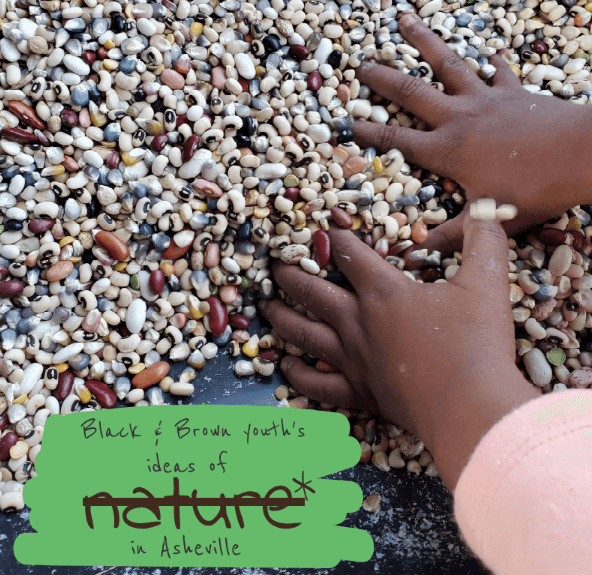
The art zine, titled “Black & Brown youth’s ideas of nature in Asheville,” was distributed throughout Ashville as a community placemaking art project.
Schmidt’s work with the youths helped her learn how to do that, she said. Originally, she wanted to measure access to nature for children of color who were living in Asheville, but that changed as her research progressed, she said
“I started to take a step back to ask what I meant by ‘nature’, and whether my own ideas of nature and ways of thinking about what nature is reflect the perspectives of the youth that I was trying to measure access to nature with,” Schmidt said.
“It made me stop and ask: ‘What do these youths actually see as nature?’ To me, that was a more interesting and important project.”
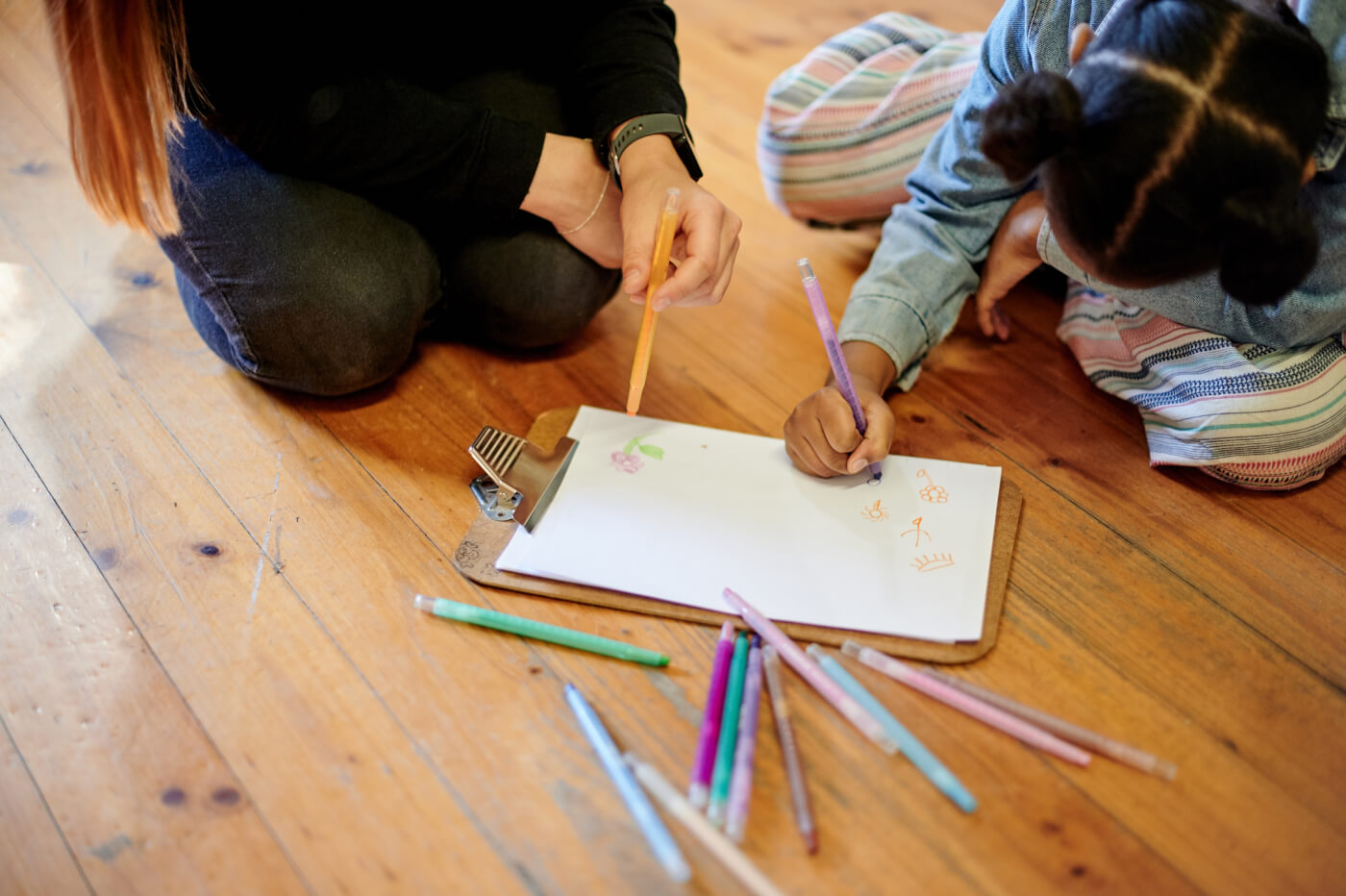
A student creates a drawing while sitting on the floor of a classroom. Photo by istock.com/Mikolette
The youths’ expressions of their ideas of nature were revealing.
When asked to draw their dream space in nature or nature around their home, most participants didn’t use the art materials that were provided. Instead, they opted for a simple pen or pencil, and only occasionally used markers, Schmidt said.
“That was the main thing that struck me,” she said. “I don’t know what the meaning is behind that, but it was something that struck me…maybe they weren’t interested in coloring that day, or there may be another meaning behind the colors they chose.”
But when they brought in paints and more art mediums, the youths let loose with it, Schmidt said.
In the art zine, Jamahl melds bright green and brown brushstrokes that resemble trees. His painting visualizes how he feels when connected with nature.
Jamahl created his painting after he, and the rest of the youths, said they didn’t know how they felt when they connected with nature. Others, like 8-year-old Khloe, saw nature through the lens of danger: She painted a sky blue, then black to resemble a time when she saw a tornado.
“…We had to go in the basement. But we don’t have one. And we have windows everywhere,” she said.
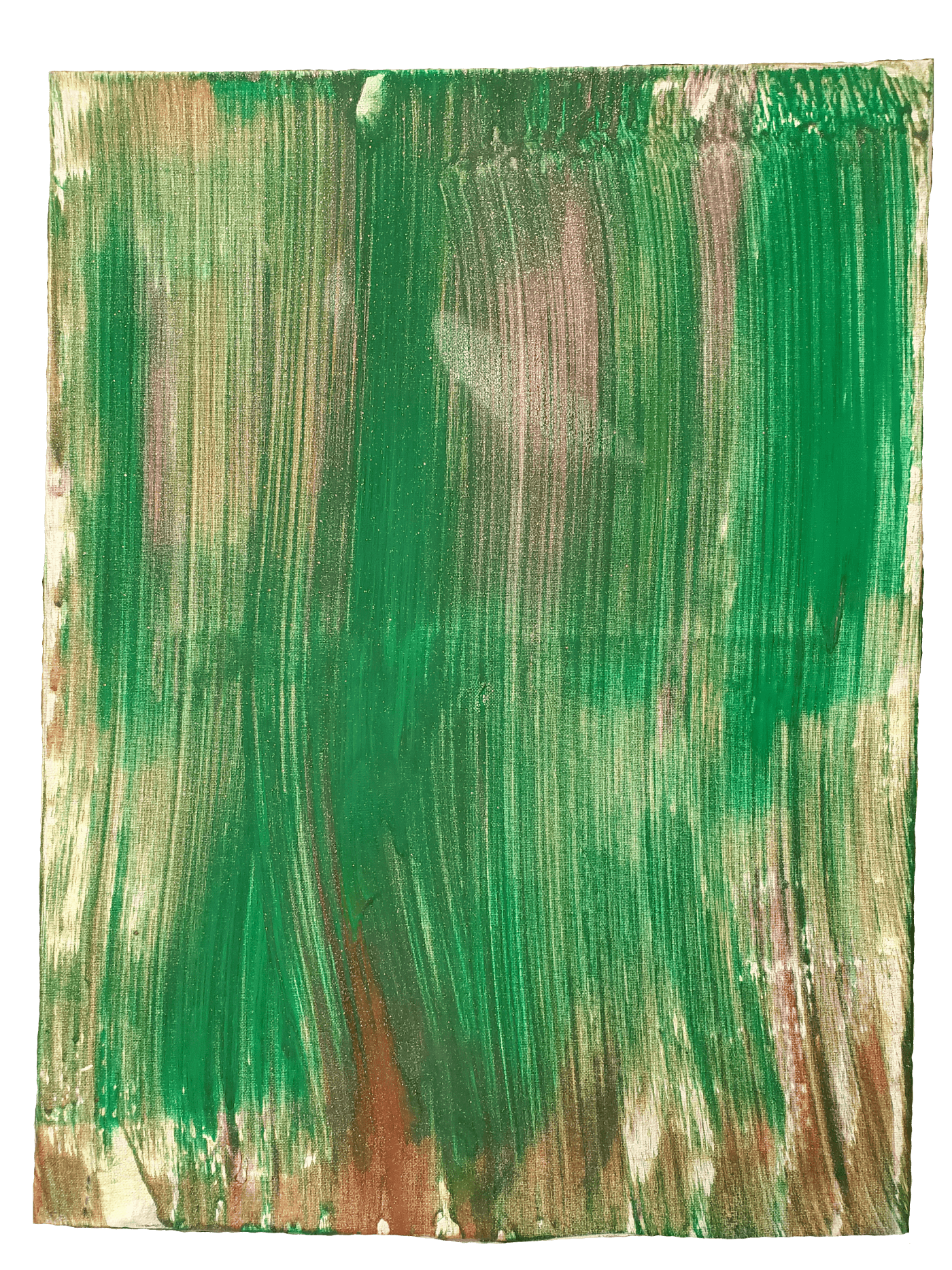
An image from the zine, created by Jamahl to visualize how he feels when connected with nature.
Schmidt said the art zine has generated much positive feedback.
“A lot of folks who’ve picked this up, the art has resonated with them,” she said. “My advisor said it even resonates with her own experiences.”
“That’s why I love the art zine as the final product of the research – because anyone could pick this up and see themselves as co-creating stories and counter-narratives of nature along with the youths who co-created the art.”
You can find the full art zine published here. If you are interested in reading Schmidts’s full thesis but are unable to acquire access, please contact Alayna Schmidt for an author’s copy at alaynas@clemson.edu
-
Network News
POLICY UPDATE: Policy and advocacy for the children and nature movement
-
Voices
Binoculars, bald eagles and my journey as a Black birder
-
Richard Louv
THE WONDER BOWL: Ten Spring and Summer Nature Activities for Kids and Adults
-
Network News
Minneapolis Spotlight: The promise and possibilities of parks for youth
-
Voices
Why nature is my motherhood ally




